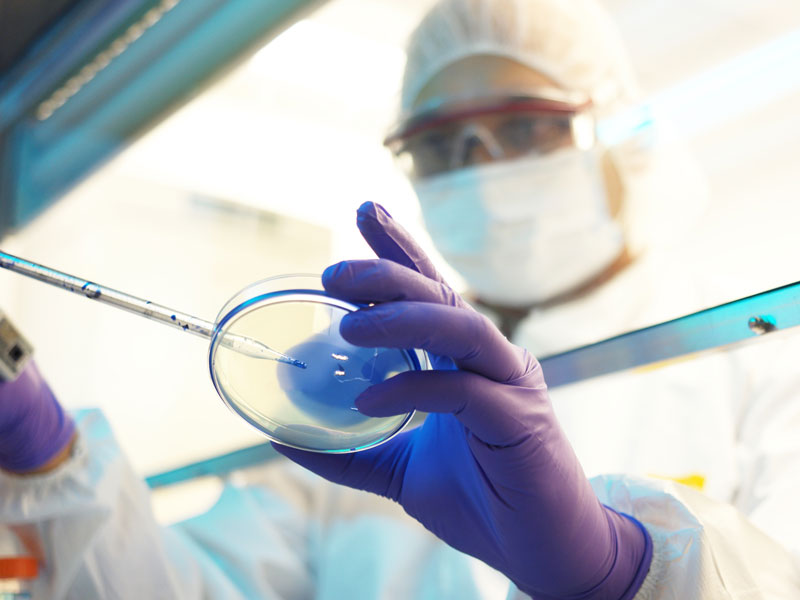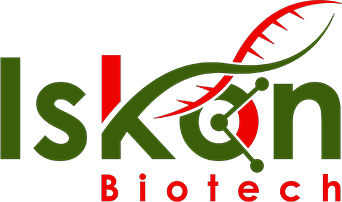Microbiology

Microbiology Testing: Detecting Microbial Organisms
Standardized Testing for Monitoring and Research
Microbial Limit Testing (MLT) is essential for assuring patient and consumer safety in the manufacturing of pharmaceutical, healthcare, and cosmetic products. It determines the quantity of viable aerobic microorganisms, the absence of pathogens, and the presence of specific microbial species in a product. MLT can be evaluated at multiple phases of production, from raw materials to finished goods. The ultimate testing frequency depends on the type and intended use of the product. MLT should be performed by qualified personnel with experience in microbiology and related analytical methodologies for optimal results. The MLT technique consists of three phases: suitability testing, microbial enumeration (total aerobic microorganism count and total combined yeast and mold count), and screening for specified microorganisms. Suitability testing ensures that the tests can detect microorganisms in the product and do not contain antimicrobial properties that could lead to false negative results. Microbial enumeration assays determine the total number of aerobic organisms, yeast, and mold in a product, whereas the Screening Test for Specified Microorganisms requires an initial suitability analysis and, if necessary, the addition of a neutralizing agent.
Tests:
- Examination of Non-Sterile Products: Microbial Enumeration Test (MET)
- USP<61>
- EP Chapter 2.6.12
- BP Chapter 82
- Japanese Pharmacopoeia XV 1st Supplement
- Examination of Non-Sterile Products: Tests for Specified Microorganisms
- USP<62>
- EP Chapter 2.6.13
- BP Chapter 81
- Japanese Pharmacopoeia XV 1st Supplement
Antimicrobial Effectiveness Tests (AETs) are necessary for determining the efficacy of antimicrobial preservatives in pharmaceutical and cosmetic products in preventing contamination over time. These tests are conducted at various time intervals over the course of 28 days and subject products to microorganisms determined by specific guidance criteria or product relevance. These criteria are addressed in guidance documents such as U.S. Pharmacopeia, European Pharmacopeia 5.1.3, ISO 11930, and PCPC M-3 and M-4. Additionally, manufacturers may design custom assays to resolve particular contamination risks. Typically, neutralization validation is conducted as part of the assay, but manufacturers may occasionally perform the assay without it. Injections, multiple-dose containers, topical and oral dosage forms, and other dosage forms containing antimicrobial preservatives must be tested. The testing performed by Iskon Labs satisfies the requirements of USP General Chapter 51 and the European Pharmacopoeia, providing scientifically sound data through triplicate plating and numerous replicate testing.
Tests:
- USP 51: Antimicrobial Effectiveness Testing
- USP-EP
Water activity (aw) is a measurement of the energy status of water in a substance, signifying its structural or chemical bonding. Moisture content alone is a poor predictor of microbial growth, perishability, chemical reactivity, color, odor, flavor, texture, and shelf-life stability. Meters utilizing the dew-point chilled mirror method or the capacitance technique for volatile materials are utilized to measure water activity. Reducing water activity is essential for preventing microbial growth, enhancing the antimicrobial efficacy of preservative systems, and preventing chemical hydrolysis and crystallization in pharmaceutical active pharmaceutical ingredients (APIs). It also assists in determining the frequency of microbial testing in non-aqueous liquids, such as ointments, which may not support microbial growth due to their low water activity. USP (United States Pharmacopoeia) contains two essential chapters on water activity: USP 1112> Application of Water Activity Determination to Nonsterile Pharmaceutical Products and Chapter 922>. Water Recreation.
Tests:
There are two significant USP (United States Pharmacopoeia) chapters that examine water activity.
- USP <1112> Application of Water Activity Determination to Nonsterile Pharmaceutical Products
- Chapter <922> Water Activity
Burkholderia cepacia is a group of Gram-negative, rod-shaped bacteria that pose a significant threat to the health of immunocompromised, mechanically ventilated, and underlying disease patients. These organisms can quickly colonize water systems, surfaces of manufacturing equipment, and non-sterile water-based products. In 2017, the FDA issued a public warning to drug manufacturers regarding the health risk posed by tainted products. Due to BCC's resistance to certain preservatives and antimicrobial agents and the absence of an official diagnostic protocol for detecting BCC, the risk is especially high. The FDA expects manufacturers of non-sterile products to establish procedures to prevent objectionable microorganism contamination, such as adequate quality of materials, sanitary design, maintenance, and cleansing of processing equipment, in order to prevent objectionable microorganism contamination. In addition, they need validated methods for testing finished products, testing in-process materials, investigating malfunctions, and reporting adverse events or quality issues.
The FDA now expects pharmaceutical companies to monitor their completed products for Burkholderia cepacia contamination. There is now an approved USP method for testing Burkholderia cepacia: USP<60> Microbiological Examination of Nonsterile Products-Tests for Burkholderia cepacia Complex.
The identification and classification of microorganisms to the species level is a crucial step in microbiology involving microbial identification. It is necessary in clinical and non-clinical settings and involves a variety of examinations and procedures. Among these are sample collection and isolation, macroscopic and microscopic examination, biochemical and physiological tests, serological tests, molecular techniques such as PCR, DNA sequencing, and ribosomal RNA analysis, and mass spectrometry techniques such as MALDI-TOF. Identification of microorganisms is indispensable for disease diagnosis, treatment, public health surveillance, food safety and quality control, environmental monitoring, pharmaceutical and biotechnology industries, and scientific research and studies. Accurate identification facilitates the selection of appropriate antibiotics, antifungals, or antivirals, enhances patient outcomes, and guarantees the safety and quality of food products.
Tests:
- USP 71
- ISO 11737
- USP 1113
- USP 61/62
Bioburden testing is an essential quality control procedure in numerous industries for determining the presence of viable microorganisms in samples and products. It is beneficial for product safety, quality control, process validation, and environmental monitoring. Membrane filtering, flow plate, spread plate, and Most Probable Number (MPN) methods are typical techniques. By detecting microbial concentrations within acceptable limits, these procedures help maintain product safety, quality, and regulatory compliance. Regular bioburden testing is required to prevent contamination-related problems and guarantee the efficacy of manufacturing processes. The choice of technique is determined by the nature of the sample and industry standards.
Tests:
- ANSI/AAMI/ISO 11737
- ANSI/AAMI/ISO 11137
- ISO 11135
- EN 13795
Products that purport to be sterile or free of viable microorganisms are sterile. The majority of these items are pharmaceuticals and medical devices. To confirm a claim of sterility and detect the presence of viable microorganisms that can cause infection or other health problems, sterility testing is required. Several compendia! Sterility Test protocols exist, such as USP <71>, EP 2.6.1, JP, and ANSI/AAMI/ISO 11737-2.
Typically, pharmaceutical products are examined via membrane filtration, whereas medical. devices are examined via direct immersion. Medical devices, such as titanium fasteners, IV tubing, needles, and other solid products, are frequently immersed directly. The samples are deposited directly into the required volume of growth medium, and the test is observed daily or on a consistent basis. Method for Testing Fertility Suitability (Bacteriostasis/Fungistasis) is required prior to routine sterility testing of products. The suitability procedure requires the addition of <100 CFU of organisms specified in the compendia to the sample/plus media and control media without sample. Routine Sterility Testing is performed based on suitability and is not modified unless the method or product formulation is altered.
Tests:
- USP <71>
- EP 2.6.1, JP
- ANSI/AAMI/ISO 11737-2
Endotoxins are a common pyrogen found in medical devices, and if undetected, they pose a significant risk to patients. Endotoxins can infiltrate the bloodstream at high concentrations, causing adverse reactions such as hemorrhagic shock, diarrhea, meningitis, fever, altered resistance to bacterial infection, and a rapid drop in blood pressure. The Bacterial Endotoxin Test, also known as the Lumulus Amebocyte Lysate (LAL) Test, measures the concentration of endotoxins in the cell walls of gram-negative bacteria. It evaluates devices that meet cerebrospinal fluid or the cardiovascular system. Devices in direct or indirect contact with intravascular, intratympanic, intrathecal, or intraocular systems must undergo Bacterial Endotoxin testing to ensure endotoxin levels are below the device specification. In kinetic chromogenic assays, a sample is combined with a lysate, resulting in the release of chromophore from a chromogenic peptide. Gel clot tests involve mixing an equal quantity of test sample and lysate, with the gel remaining at the bottom of the tube if endotoxin is present. In kinetic turbidimetric tests, a sample is combined with lysate, turbidity is increased in the presence of endotoxins, and the onset time required to attain a predetermined absorbance is recorded.
Tests:
- ANSI/AAMI ST72
- USP/NF <161> and <85>
- Ph Eur 2.6 14. Method A, C, and D
The Ames Mutagenicity Test is utilized to determine the potential mutagenic activity of a medical device/material extract. As part of the genotoxicity suite of tests, the Bacterial Reverse Mutation Assay (Ames test) is performed to determine if leachable from a medical device/material are mutagenic.
This test adheres to the AAMI/ANSI/ISO/10993-3, AAMI/ANSI/ISO/10993-1, AAMI/ANSI/ISO/10993-12, and OECD 471 guidelines as one of the three levels of in vitro assays for genotoxicity.
Testing hand sanitizers is essential for ensuring their safety, effectiveness, and quality. It entails analyzing active ingredients, evaluating effectiveness against microorganisms, evaluating contact time, evaluating residual effects, evaluating skin compatibility, evaluating stability and shelf life, detecting microbial contamination, ensuring regulatory compliance, and validating labeling information. Manufacturers and consumers can rely on the quality and efficacy of hand sanitizers, which are essential for maintaining proper hand hygiene and preventing infectious diseases because they adhere to rigorous testing protocols and industry standards. By adhering to stringent testing protocols and industry standards, manufacturers and consumers can have confidence in the quality and efficacy of hand sanitizers, thereby promoting proper hand hygiene and reducing the spread of infection.
Tests:
- (MIC) Minimum Inhibitory Concentration Test (Standard In Vitro Test for Microbial Inhibition)
- ASTM E2315 (Standard In Vitro Time-Kill Procedure)
International Organization for Standardization (ISO) Microbial Content techniques are used to determine the levels of bacteria, yeast, and mold in cosmetic items during testing. In addition, any unwanted organisms present in the cosmetic product can be found through qualitative enrichment testing of the samples in a non-selective growth medium followed by subculture to selective/differential media.
Tests:
- ISO 21149 Cosmetics: Microbiology - Enumeration and Detection of Aerobic Mesophilic Bacteria
- ISO 16212 Cosmetics: Microbiology - Enumeration of Yeast and Mold
- ISO 21150 Cosmetics: Microbiology - Detection of Escherichia coli
- ISO 22717 Cosmetics: Microbiology - Detection of Pseudomonas aeruginosa
- ISO 22718 Cosmetics: Microbiology - Detection of Staphylococcus aureus
- ISO 18416 Cosmetics: Microbiology - Detection of Candida albicans
